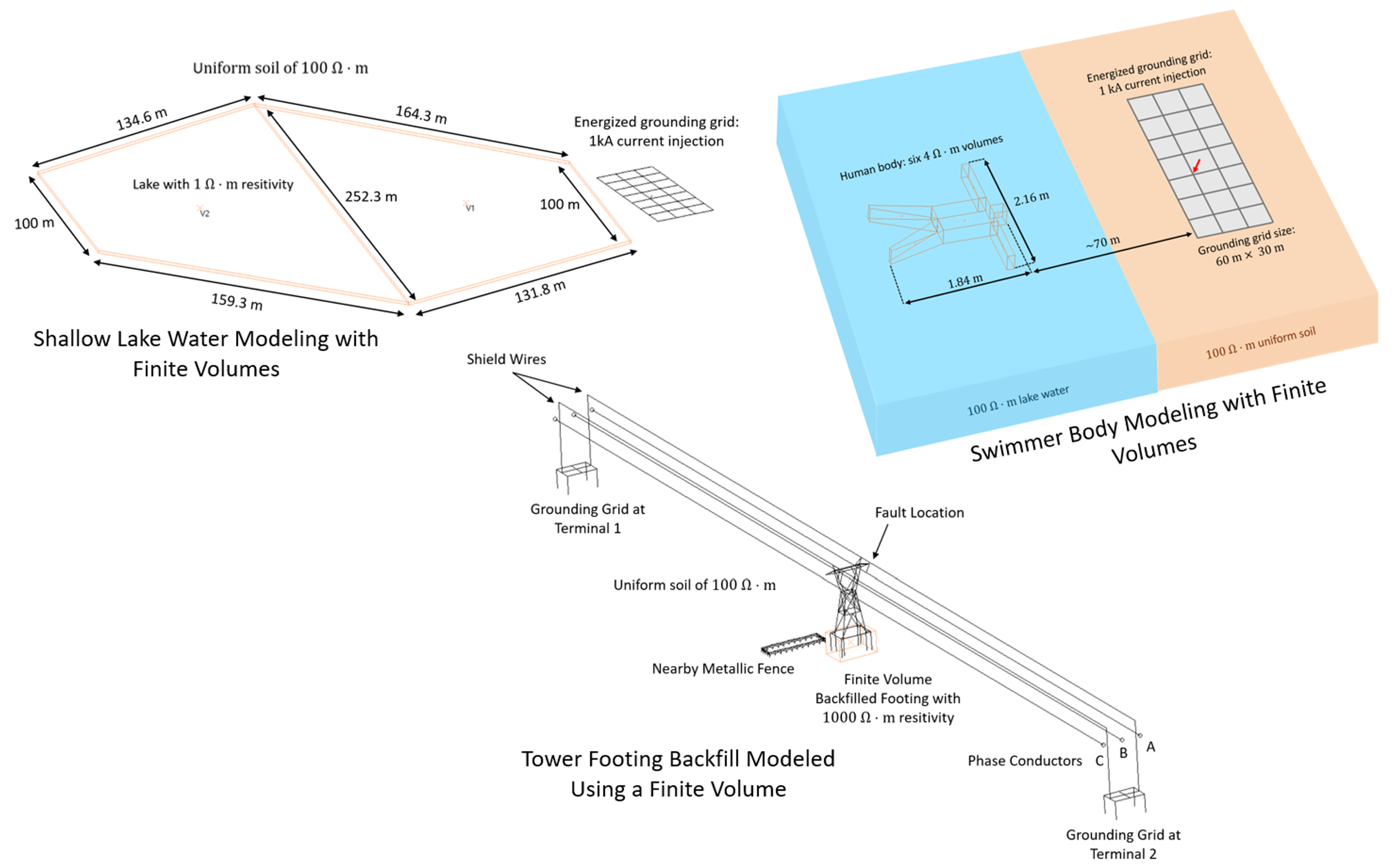
|
||
Practical Applications of Devices in HIFREQFive types of devices that can be connected at Device Connection Locations (DCLs) are now supported by the HIFREQ module (MultiFields, MultiFields+, MultiFields Pro, CDEGS software packages). These devices include switches, voltage sources, current sources, three-phase voltage sources, and database-driven devices. This feature allows users to simulate multiple scenarios with varying device states using a single HIFREQ model run, which is illustrated in this article through three real-world examples: an interference study involving a transmission line parallel to a pipeline, a train simulation assessing magnetic field exposure, and integrity testing of a grounding grid with a known defect. 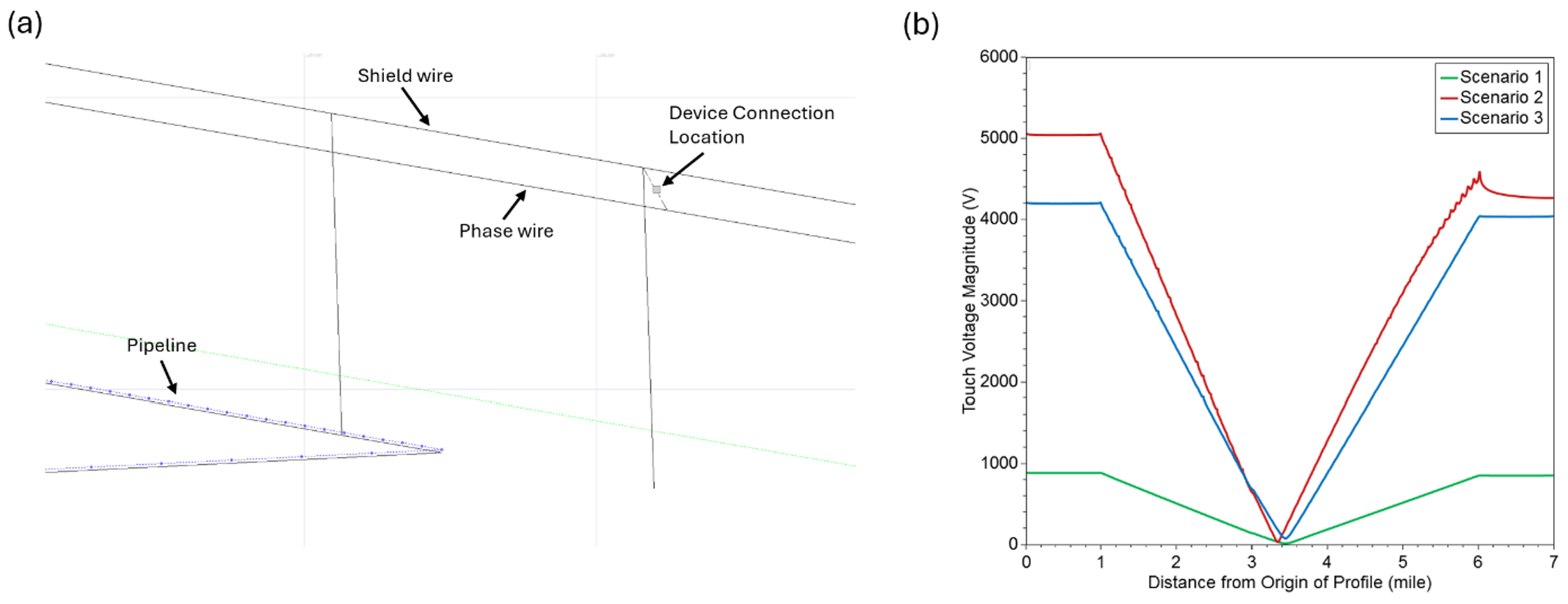
This approach is based on the superposition principle in electromagnetics, which enables the combination of individual electromagnetic responses from distinct sources to determine the overall system behavior. DCLs act as virtual nodes within the HIFREQ network where external devices can be integrated. The initial solution computed by the solver is incomplete without specifying the behavior of these connected devices in a post-processing step. This approach offers significant computational advantages, allowing rapid exploration of device-dependent variations using a single HIFREQ run. Magnetic Shielding with Plates in HIFREQThe ability to model metallic plates was introduced many years ago in the HIFREQ module of MultiFields. However, one limitation of the original model was its inability to account for magnetic flux generated by plates made of materials with high relative permeability. SES has developed a new technique to address this limitation by accounting for the magnetic flux produced by currents within the plates. The validity of this technique was demonstrated in a UGC paper recently published. This feature is integrated in the recently released Version 20 of HIFREQ. To activate this feature, set the Magnetic-Flux option in the Plate Settings under Define | Advanced Options, as shown below: 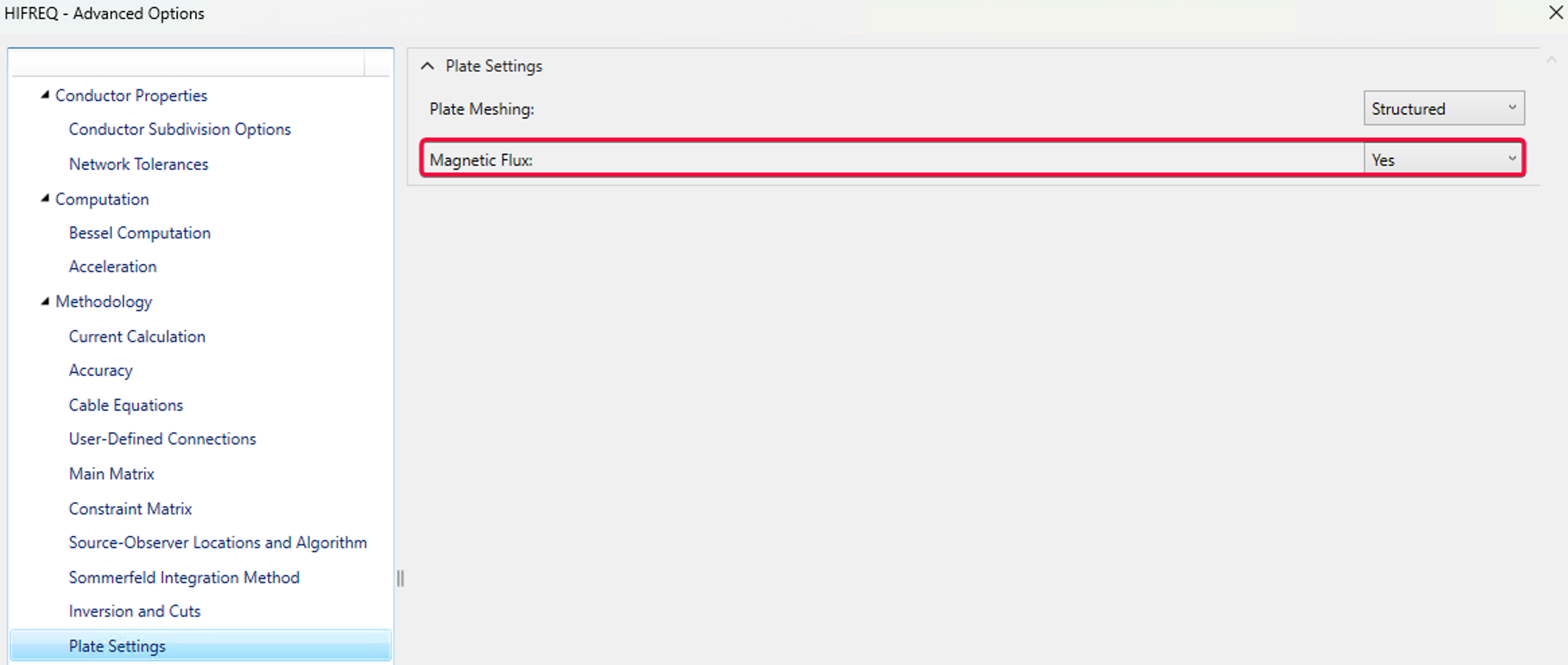
With this enhancement, plates in HIFREQ can now be used to accurately model scenarios including plates with high-permeability materials, such as various types of steel or Mu-Metal. This capability enables precise calculation of magnetic field shielding in open, closed, or perforated structures, helping to mitigate fields generated by low- and high-frequency sources including aboveground and underground power systems, transformers, trains, and more. On a broader scale, the impact of transient phenomena, such as lightning strikes and HVDC faults, on equipment or systems enclosed within magnetic shielding structures can also be accurately modeled. Now HIFREQ is capable of analyzing magnetic shielding effects even in the DC regime. Grounding and EMI Analysis in a Vertical Multi-Layer SoilA new vertical multi-layer soil model in the HIFREQ module of the MultiFields software package is available in SES Software Version 20, enabling more realistic grounding and EMI analysis in environments with strong vertical resistivity transitions, such as riverbanks and canals. Unlike traditional models, this approach incorporates vertical soil boundaries, supporting full-wave solutions through the Unified Transform Method. The model supports flexible definition of conductor geometries and soil boundaries, and its accuracy has been verified through comparison with established analytical solutions and numerical simulations. 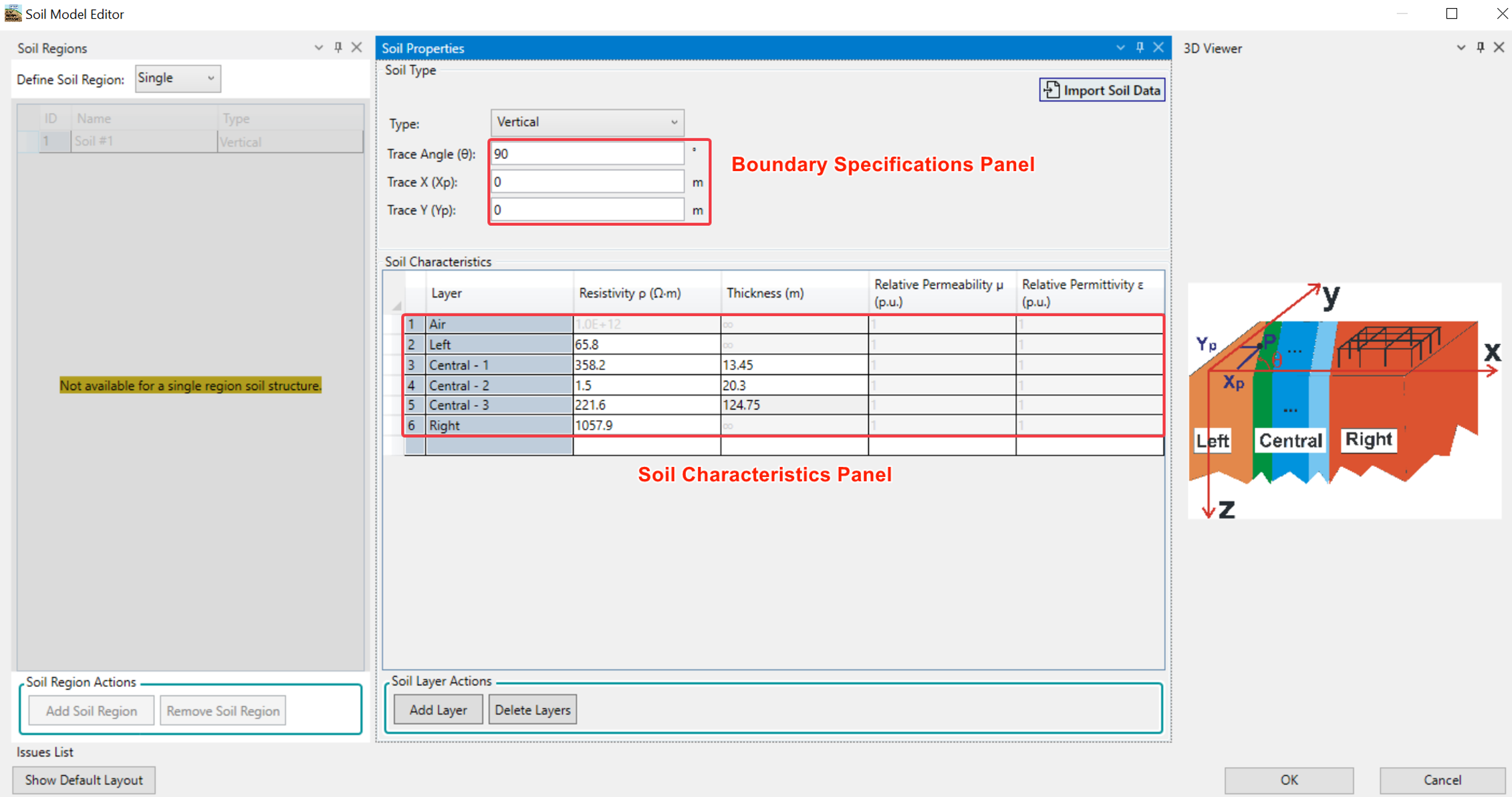
configuration interface for the vertical multi-layer soil model. A detailed case study involving a 15-kA ground fault near a GIS substation crossing a low-resistivity river highlights the practical impact of vertical stratification. Results show significant deviations in leakage currents, fault current distribution, touch and step voltage levels when vertical boundaries are included, especially near the central tower and GIS. As shown in the following image, the vertical model predicts significantly higher touch voltages at the edge of the GIS grid closest to the river boundary, up to twice as high as the values computed using the multi-region model. While computation time approximately doubles compared to horizontal models, the approach remains efficient and more accurate than traditional FEM-based methods, making it a powerful tool for real-world grounding safety and EMI design in complex terrains. 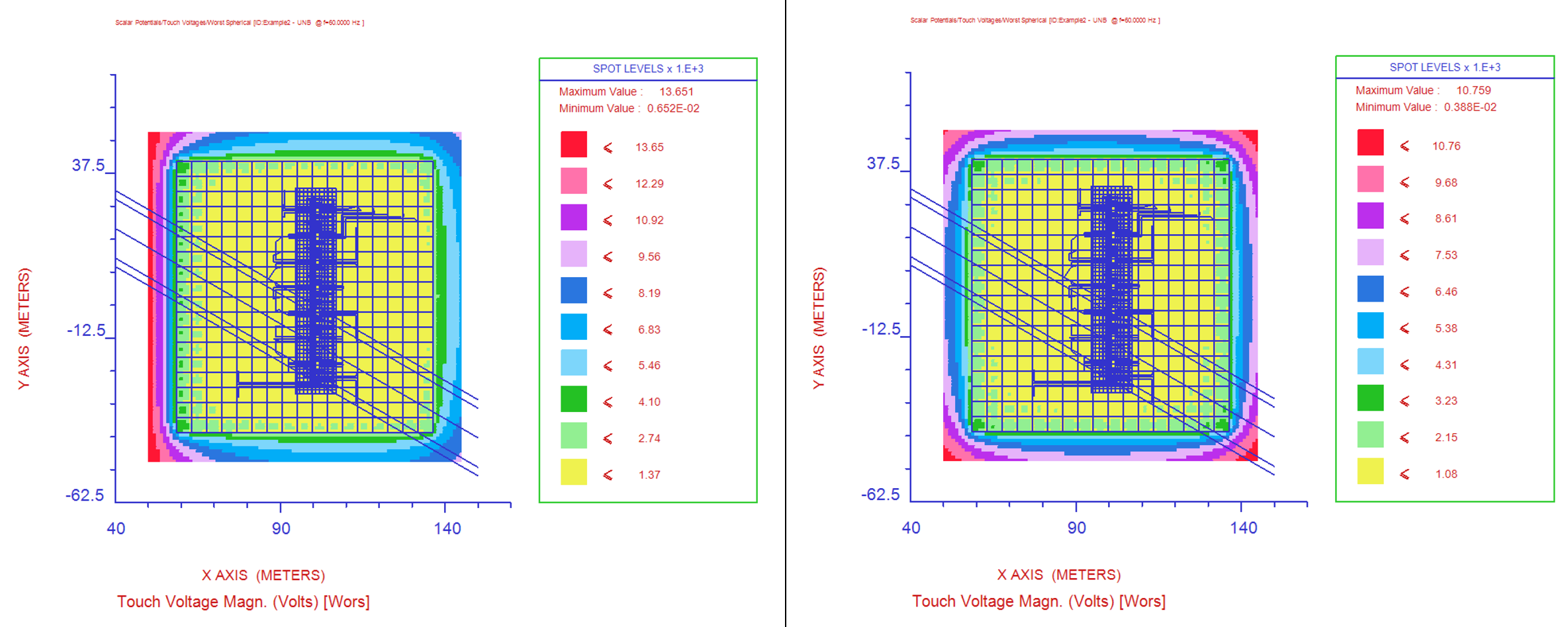
Left: The three-layer vertical soil. Right: The soil where effects of vertical soil boundaries are ignored. Finite Volume Modeling in MultiFields:
|
| UGC 2025 Titles | Home |
|
SES & technologies ltd. 3055 Blvd. des Oiseaux, Laval, Quebec, Canada, H7L 6E8 +1 (450) 622-5000 info@sestech.com ©2025 SafEngServices & technologies ltd. |
